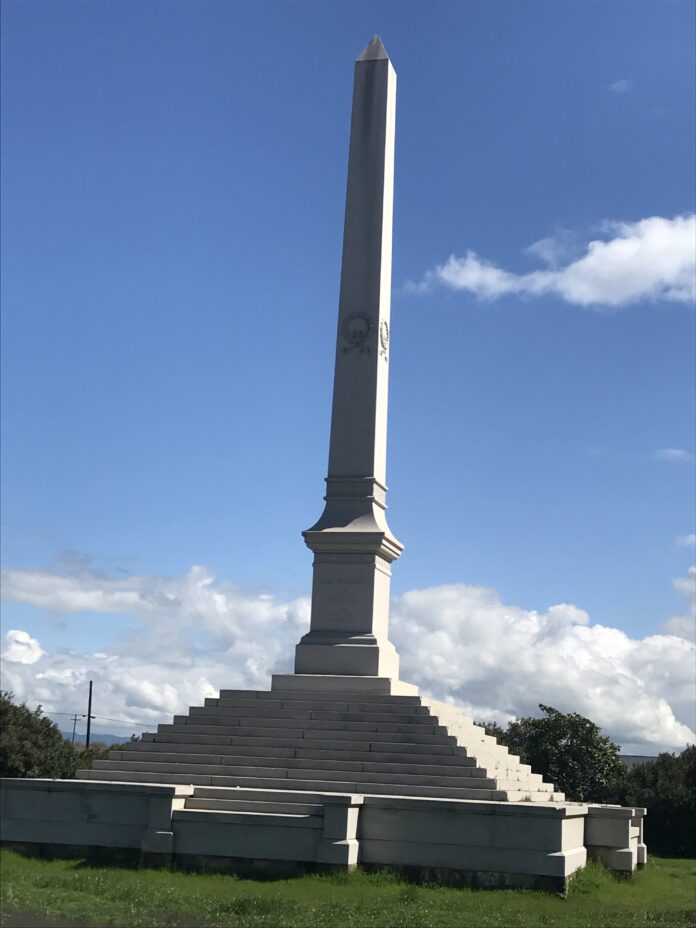The Merced GSP Stakeholder Advisory Committee meeting was called to order at 1:00 p.m. on Monday, January 31, 2022, by Charles Gardiner, principal strategist for the consulting firm Catalyst. The committee has 29 members representing a range of entities impacted by the Merced Subbasin include Merced city and county, smaller neighboring communities, UC Merced, NGOs like the Sierra Club and Valley Land Alliance, several individual farm owners, the Leadership Counsel, Merced Farm Bureau and individual citizens. Many of the members and several alternates were in attendance on Zoom while a few members of the public were in webinar mode. Also attending were several members of the Coordination Committee representing the three GSAs in the Subbasin – Merced Irrigation-Urban GSA, Merced Subbasin GSA and the Turner Island Water District GSA #1.
The Meeting
Acting as meeting coordinator, Gardiner welcomed the group to its first meeting in the New Year and called it to order. After the obligatory reminders about using Zoom, he introduced the agenda which focused on the SGMA Implementation Grant applications. He turned over the screen to Jim Blanke, senior hydrologist for Woodard & Curran, the project managers for the GSP.
Blanke began by explaining that on a statewide basis there is $171 million available to GSAs for grant awards with $152 million of that specifically for critically over drafted subbasins of which most are in the San Joaquin Valley. He said that in Round 1 of the grant procedure, $7.6 million is available for each Subbasin including Merced and further that the subbasins do not compete with each other in this first round, as long as the projects meet the criteria set by the state DWR. A later Round 2 will be open to all medium and high priority basins not receiving funds in the first Round, probably later in 2022 and 2023.
He said that the grant applications involve a scoring process. Some projects are included in the GSP and have been accomplished and others are new and now being identified. The question for the Stakeholder Advisory Committee (SAC) is are they appropriate and are there others that need future consideration.
Proposed Projects
Blanke had a series of slides that show the 18 existing and new projects. Eleven of them involve storage and recharge at locations across the subbasin and shown on a map with each of the three GSAs. He briefly went through them individually. A question was asked about when these projects could actually hold water. Several of the proponents of these projects replied. Simon Vander Woude said the basin proposed for his dairy farm would be ready within the year. Others ranged from immediately with funding to up to three years for a larger project.
involve storage and recharge at locations across the subbasin and shown on a map with each of the three GSAs. He briefly went through them individually. A question was asked about when these projects could actually hold water. Several of the proponents of these projects replied. Simon Vander Woude said the basin proposed for his dairy farm would be ready within the year. Others ranged from immediately with funding to up to three years for a larger project.
Next Blanke listed the remaining seven projects that he categorized as “interties and monitoring / management projects.” These are activities like filling data gaps with monitoring wells to be drilled. Another is applying the Merced Water Resources Model Enhancement, a plan to reduce the salinity of delivered water, using GRAT technology to identify the best places for water recharge… places where the soil types allow the fastest movement of water to the aquifer. The Merced ID – Urban GSA proposes installing 200 flow meters on production wells to better monitor water use. The Turner Island Water District is proposing the construction of wells above the Corcoran clay layer that could replace deeper wells.
Enhancement, a plan to reduce the salinity of delivered water, using GRAT technology to identify the best places for water recharge… places where the soil types allow the fastest movement of water to the aquifer. The Merced ID – Urban GSA proposes installing 200 flow meters on production wells to better monitor water use. The Turner Island Water District is proposing the construction of wells above the Corcoran clay layer that could replace deeper wells.
Discussion followed with a key question posed… what’s the total cost of these 18 projects. The answer was $27 million. Only $7.6 million is available but DWR wants $10 million proposed in case some are rejected. Blanke noted that they are substantially above the requested amount and that’s where scoring and ranking come into play.
Committee member Susan Walsh representing the city of Merced asked if the scoring system is based on state priorities or local? The answer was the scoring system is the state’s. She then asked if recharge projects are well regarded by the state. Blanke commented that if the criteria are met, there is no competition from other regions. Matt Beaman, water resources regulatory engineer for Merced ID, who is not a committee member but has expertise here, said all these projects fit the state criteria. He added the criteria give emphasis to benefits for disadvantaged Spanish speaking communities and improvement of human drinking water.
commented that if the criteria are met, there is no competition from other regions. Matt Beaman, water resources regulatory engineer for Merced ID, who is not a committee member but has expertise here, said all these projects fit the state criteria. He added the criteria give emphasis to benefits for disadvantaged Spanish speaking communities and improvement of human drinking water.
Continuing the scoring discussion, Blanke explained the Coordination Committee does the scoring then the SAC makes recommendations for modifications of the grants, if any, to address specific, justifiable needs. Next the GSA staff reviews the applications and gives the Coordination Committee once more review before they are submitted. Blanke showed a slide with the state’s 10 points for scoring. There is a description of the project and its benefits and for whom. Step 5 does ask if it benefits underrepresented communities. Another question asks if the project specifically address the human right of potable water. The application then requires the identification of the tasks to be completed, a budget and a schedule.
Factors in the Coordination Committee’s thinking include overall feasibility, water rights, recharge potential, subsidence, declining groundwater levels and areas surrounded by domestic wells. Committee member David Serrano, a grower from LeGrand, wondered if projects in the eastern and northeastern sections would be preferred because more of the subbasin is directly under those sections. Member Jean Okuye of the East Merced RCD tended to agree and said it would seem recharge projects should be located where the groundwater would be replenished the fastest… it’s all the same bathtub. She also asked about the possibility of using fracking technology for recharge, horizontal perforated pipes sunk in the ground. She said she had spoken with a retired academic hydrologist who had suggested this.
Beaman said there are no active injection projects or dry wells being put in the ground in the MID area, but some are being considered in the LeGrand area. Darcy Brown of River Partners referenced research at Stanford University. They have technology that can be towed behind a 4-wheeler that will determine the substrates underneath and project water flows. Parry Klassen of ESJWQC noted his group has had difficulty getting permits for direct injection in old dry wells. He said the Water Board is concerned about possible pollution of the ground water from impure surface water. He also noted that the pipes used to line the dry wells can quickly become clogged with “biologicals,” closing up the well casings.
Throughout the discussion, Gardiner had been acting as moderator but shortly after 2 p.m. he had to leave the meeting for another commitment, which he had advised the group about at the start. He turned the screen back to Blanke, who continued to ask for more consideration of priorities from the SAC. Maxwell Norton representing unincorporated area said that engineering feasibility is important – if it can’t be done, don’t start. He also asked how realistic is it that state will grant water rights for diversion of stream flows into some of the planned recharge basins. Beaman said MID has applied for permission for such a diversion in one instance and has not heard back from the Water Board. On the topic of diversions, Lisa Kayser-Grant of the Sierra Club and a committee member asked if there is consideration of the impact on downstream wetlands if storm waters are diverted. Kel Mitchel, a member of the Coordination Committee from the Turner Island WD GSA, said no future stream diversions are included in the grant proposal from his group.
Blanke concluded this part of the meeting saying the grant applications are due February 18. He said GSA staff are reviewing the Coordination Committee’s scoring and will propose suggested rankings soon with results sent to the GSAs, working with the project applicants to confirm the needed information.
A final question here from someone we couldn’t identify on the Zoom… but right on point. This person said that many of these projects, particularly recharge, are aimed at capturing water in wet years. Has any thought been given to projects that apply to drought years, such as we’re in right now?
GSP Reviews
No more discussion was forthcoming, so Blanke moved to the next agenda item, a review of the preliminary response by the DWR to the Merced Subbasin GSP. A final letter had been even more recently received and will be available I believe on the website of Merced GSA. Three areas of the GSP were found to have insufficient information. If this reporter had a better grasp of water issues and the turgid language found in the DWR letter, he could give you a clear and succinct summary. Suffice to say the areas relate to interconnected water in non-consecutive dry years, discrepancies in measuring reduced water levels in monitoring wells and the GSP’s willingness to accept some continuing subsidence in the longer term.
interconnected water in non-consecutive dry years, discrepancies in measuring reduced water levels in monitoring wells and the GSP’s willingness to accept some continuing subsidence in the longer term.
Committee member Walsh said it seems like they (DWR) don’t like us, given all the work that went into the original GSP. Blanke replied that there was a lot of work, and the 180 day deadline will be challenging. Bob Kelley, a member representing the community of Stevinson, said it seems like the biggest challenge and the biggest deficiency is on the issue of subsidence. He said the plans states there will be continued subsidence during the transition period and they’re suggesting there shouldn’t be any. Kelley said if we don’t immediately stop pumping from below the Corcoran clay level, what else can be done. The issue does certainly not lend itself to a quick fix.
Blanke said that there had already been a meeting between the engineers and DWR on January 10th and that the technical team is evaluating new data and possible innovative approaches. These elements will be put in draft form for review the SAC and the Coordination Committee, with the goal of having an updated GSP by late July.
Water Conditions
An update on the drought was the next item of business. Blanke reviewed the season and the current drought monitor map. In recent years, there have been dry, warm winters with early melt. With the December storms, some watersheds are better off than others. He also commented on the tanked water program with a map showing domestic wells that have gone dry.
Committee member Norton observed it seemed there were fewer “dots” on the map. Lacey McBride, Merced County Water Resources Manager, said that the Self Help program is starting to provide funds to people who are income eligible so that wells can be deepened and repaired.
The final item of business was a round of updates from the individual GSAs. Blanke heads the Coordination Committee. Lacey McBride spoke about the Merced Subbasin GSA, Hicham ElTal, Deputy General Manager, Water Rights / Supply for Merced ID spoke for the Merced Irrigation -Urban GSA. And Kel Mitchell reported on Turner Island.
With no public comment, the meeting was adjourned at nearly 3 p.m., right on schedule.
DISCLAIMER OF RESPONSIBILITY; Waterwrights strives to provide clients with the most complete, up-to-date, and accurate information available. Nevertheless, Waterwrights does not serve as a guarantor of the accuracy or completeness of the information provided, and specifically disclaims any and all responsibility for information that is not accurate, up-to-date, or complete. Waterwrights’ clients therefore rely on the accuracy, completeness and timeliness of information from Waterwrights entirely at their own risk. The opinions expressed in this report are those of the author and do not represent any advertisers or third parties.
and specifically disclaims any and all responsibility for information that is not accurate, up-to-date, or complete. Waterwrights’ clients therefore rely on the accuracy, completeness and timeliness of information from Waterwrights entirely at their own risk. The opinions expressed in this report are those of the author and do not represent any advertisers or third parties.
ALL RIGHTS RESERVED. Copyright 2022 by WaterWrights.net
The Merced Groundwater Subbasin is one of 21 basins in the State of California identified by the California Department of Water Resources as critically overdrafted and one of 48 basins considered high priority. Consistent with the requirements of the Sustainable Groundwater Management Act (SGMA), water management and land management agencies in Merced Subbasin have formed three Groundwater Sustainability Agencies (GSAs): the Merced Irrigation-Urban Groundwater Sustainability Agency, the Merced Subbasin Groundwater Sustainability Agency, and the Turner Island Water District Groundwater Sustainability Agency. The three GSAs collaborated to develop one Groundwater Sustainability Plan for the entire Merced Groundwater Subbasin by January 2020. The GSAs reviewed groundwater conditions and identified means to ensure the long-term sustainability of the Merced Groundwater Subbasin. For information, contact: Mike Jensen, Merced Irrigation-Urban Groundwater Sustainability Agency, 209-354-2856 mjensen@mercedid.org • Mike North, County of Merced, Merced Subbasin Groundwater Sustainability Agency, 209-726-2744, MNorth@co.merced.ca.us • Larry Harris, Turner Island Water District Groundwater Sustainability Agency #1, 209-827-7700, TIWD-GSA1@wolfseninc.com

































